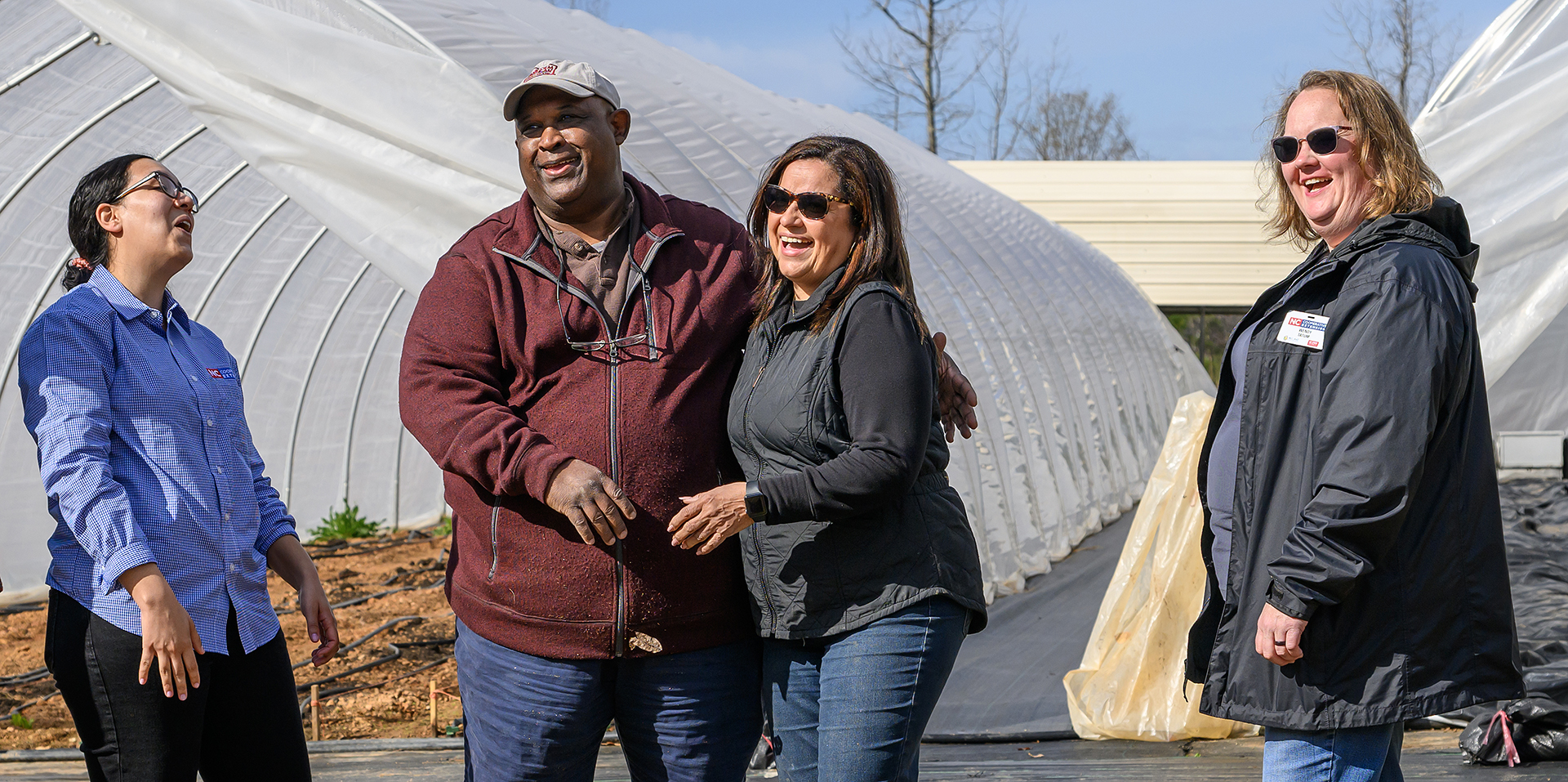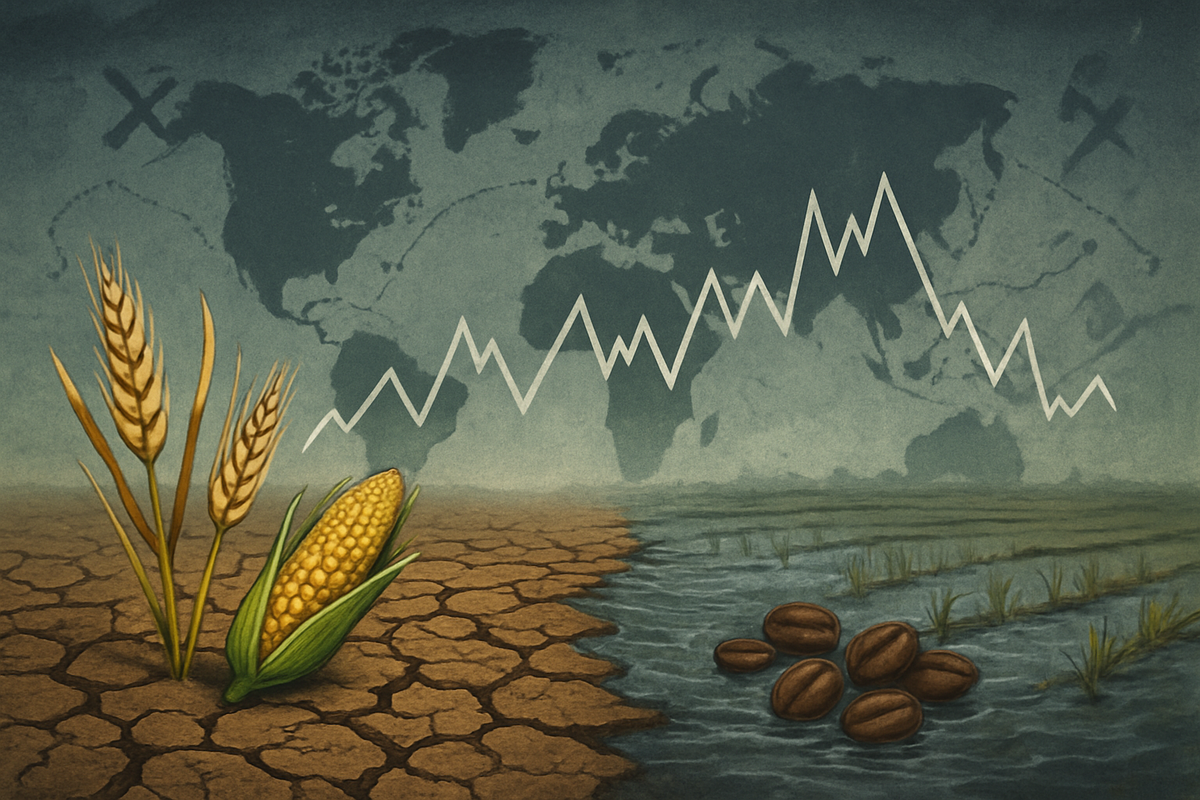New Mexico receives $3.5 million federal grant to strengthen local food supply chain – KOAT

Report on Federal Grant to Strengthen New Mexico’s Food Supply Chain and Advance Sustainable Development Goals
Introduction
The state of New Mexico has been awarded a $3.54 million federal grant through the Resilient Food Systems Infrastructure (RFSI) program. This funding is designated to strengthen the local food supply chain by supporting 18 agribusinesses. The initiative focuses on enhancing the middle of the supply chain, including processing, aggregation, and distribution, thereby directly contributing to several United Nations Sustainable Development Goals (SDGs).
Alignment with Sustainable Development Goals (SDGs)
This investment promotes a multi-faceted approach to sustainable development, with significant contributions to the following goals:
- SDG 2: Zero Hunger: By improving the infrastructure for local food distribution and storage, the grant aims to increase access to fresh, locally grown food for communities across New Mexico, enhancing food security and promoting sustainable agriculture.
- SDG 8: Decent Work and Economic Growth: The funding supports local farmers, ranchers, and entrepreneurs, fostering job creation and stimulating the state’s economy. It promotes inclusive and sustainable economic growth by investing in local enterprises.
- SDG 9: Industry, Innovation, and Infrastructure: The projects involve building resilient infrastructure through the construction of facilities, purchasing modern equipment, and implementing innovative solutions like mobile cold storage, which are crucial for a sustainable industrial and agricultural sector.
- SDG 11: Sustainable Cities and Communities: Strengthening the links between rural producers and local communities makes the state’s food system more resilient and accessible, contributing to the creation of sustainable and self-sufficient communities.
- SDG 12: Responsible Consumption and Production: The initiative encourages sustainable production patterns by supporting organic farms and local producers, reducing food miles, and strengthening the market for locally sourced products.
Project Scope and Key Initiatives
The grant will fund a range of projects designed to expand production capacity, diversify value-added offerings, and improve distribution networks. The 18 recipient agribusinesses include entities such as Backyard Farms, Bluefly Farms, La Mesa Organic Farms, Frontier Food Hub, and Statewide Products Company.
Specific Project Examples and SDG Impact
- Frontier Food Hub: The deployment of new mobile cold storage units in rural areas directly addresses SDG 9 (Infrastructure) by providing critical technology to underserved regions. This also supports SDG 2 (Zero Hunger) by reducing food spoilage and improving food availability.
- La Mesa Organic Farms: Upgrades to equipment for increasing the production of heritage apple cider and blue corn products align with SDG 12 (Responsible Production) by preserving agricultural biodiversity and promoting sustainable farming practices. This also contributes to SDG 8 (Economic Growth) by creating niche, high-value products.
- Statewide Products Company: The expansion of rural delivery services with new vehicles and software enhances logistical infrastructure, a key component of SDG 9. This initiative is vital for achieving SDG 11 (Sustainable Communities) by ensuring that rural populations have reliable access to food.
Conclusion
The $3.54 million federal grant represents a strategic investment in New Mexico’s food system, with clear and direct impacts on achieving global Sustainable Development Goals. By focusing on critical infrastructure in the middle of the supply chain, the initiative is poised to create a more resilient, equitable, and sustainable food network that benefits the state’s economy, environment, and communities.
Analysis of Sustainable Development Goals in the Article
1. Which SDGs are addressed or connected to the issues highlighted in the article?
-
SDG 2: Zero Hunger
The article’s central theme is strengthening the local food supply chain to make New Mexico-grown products more accessible to local communities. This directly supports the goal of ending hunger, achieving food security, improving nutrition, and promoting sustainable agriculture.
-
SDG 8: Decent Work and Economic Growth
The grant is described by Gov. Michelle Lujan Grisham as an “investment in our economy.” By providing $3.5 million to 18 agribusinesses for expansion and upgrades, the initiative supports local entrepreneurs, sustains jobs, and fosters economic growth within the state’s agricultural sector.
-
SDG 11: Sustainable Cities and Communities
The project aims to create a “more accessible food network across New Mexico,” which strengthens the links between rural food-producing areas and the communities that consume the food. This enhances community resilience and food security by reinforcing local and regional supply chains.
-
SDG 12: Responsible Consumption and Production
By investing in infrastructure like “processing, distribution and food storage,” the initiative helps reduce food loss along the supply chain. Strengthening local food systems also promotes more sustainable production and consumption patterns by reducing the distance food travels from farm to table.
2. What specific targets under those SDGs can be identified based on the article’s content?
-
SDG 2: Zero Hunger
- Target 2.1: End hunger and ensure access to safe, nutritious, and sufficient food. The article highlights that the grant’s purpose is to help “more New Mexico grown products reach local communities” and create a “more accessible food network,” particularly mentioning projects like deploying “mobile cold storage units in rural areas.”
- Target 2.3: Double the agricultural productivity and incomes of small-scale food producers. The grant provides direct financial support to “18 agribusinesses” and “local producers” to expand operations, purchase equipment, and diversify “value-added offerings,” which helps them bring more food to market and increase their economic viability.
- Target 2.4: Ensure sustainable food production systems and implement resilient agricultural practices. The funding comes from the “Resilient Food Systems Infrastructure (RFSI) program,” explicitly aiming to strengthen the state’s food system and make it more resilient.
-
SDG 8: Decent Work and Economic Growth
- Target 8.2: Achieve higher levels of economic productivity through diversification and technological upgrading. The article states that funds will be used for “equipment purchases, and facility upgrades” and gives examples like “upgrading equipment to increase production of heritage apple cider” and expanding delivery with “new vehicles and software.” This is a direct investment in technological upgrading and value-added diversification.
-
SDG 11: Sustainable Cities and Communities
- Target 11.a: Support positive economic, social, and environmental links between urban, peri-urban, and rural areas. The entire initiative is designed to strengthen the “local food supply chain,” which is the primary link between rural producers (“farmers, ranchers”) and the communities they serve.
-
SDG 12: Responsible Consumption and Production
- Target 12.3: Halve per capita global food waste and reduce food losses along production and supply chains. The investment in “processing, distribution and food storage,” specifically the “new mobile cold storage units,” is a direct measure to reduce post-harvest food losses and improve the efficiency of the supply chain.
3. Are there any indicators mentioned or implied in the article that can be used to measure progress towards the identified targets?
Yes, the article mentions or implies several quantitative and qualitative indicators:
-
Indicators for SDG 2 (Zero Hunger)
- Amount of financial flows to the agricultural sector: The article explicitly states a “$3.54 million federal grant” is being invested.
- Number of small-scale producers supported: The article specifies that “18 agribusinesses” will receive funding.
- Investment in agricultural infrastructure: The article details investments in “mobile cold storage units,” “upgrades for organic farms,” and expanded “processing, distribution and food storage” facilities.
-
Indicators for SDG 8 (Decent Work and Economic Growth)
- Investment in technological upgrades: The article mentions specific examples, such as the purchase of “new vehicles and software” and “upgrading equipment” for producing value-added products.
- Increase in value-added production: The goal to increase production of “heritage apple cider and blue corn products” serves as an indicator of diversification and a move towards higher-value goods.
-
Indicators for SDG 12 (Responsible Consumption and Production)
- Investment in infrastructure to reduce food loss: The deployment of “mobile cold storage units in rural areas” is a specific, measurable action aimed at preventing food spoilage and loss in the supply chain.
4. Table of SDGs, Targets, and Indicators
| SDGs | Targets | Indicators Identified in the Article |
|---|---|---|
| SDG 2: Zero Hunger | 2.1: Ensure access to safe, nutritious and sufficient food. | Deployment of mobile cold storage units in rural areas to create a more accessible food network. |
| SDG 2: Zero Hunger | 2.3: Double the productivity and incomes of small-scale food producers. | $3.54 million grant provided to 18 agribusinesses to expand production and value-added offerings. |
| SDG 2: Zero Hunger | 2.4: Ensure sustainable food production systems and resilient agricultural practices. | Funding from the Resilient Food Systems Infrastructure (RFSI) program to strengthen the local food system. |
| SDG 8: Decent Work and Economic Growth | 8.2: Achieve higher levels of economic productivity through diversification and technological upgrading. | Investment in equipment upgrades, new vehicles, and software for agribusinesses. |
| SDG 11: Sustainable Cities and Communities | 11.a: Support positive links between urban, peri-urban and rural areas. | Funding projects that improve processing, aggregation, and distribution to connect rural producers with local communities. |
| SDG 12: Responsible Consumption and Production | 12.3: Reduce food losses along production and supply chains. | Investment in expanded food storage, processing, and mobile cold storage units to prevent post-harvest loss. |
Source: koat.com
What is Your Reaction?
 Like
0
Like
0
 Dislike
0
Dislike
0
 Love
0
Love
0
 Funny
0
Funny
0
 Angry
0
Angry
0
 Sad
0
Sad
0
 Wow
0
Wow
0




















































.jpg.webp?itok=0ZsAnae9#)

























